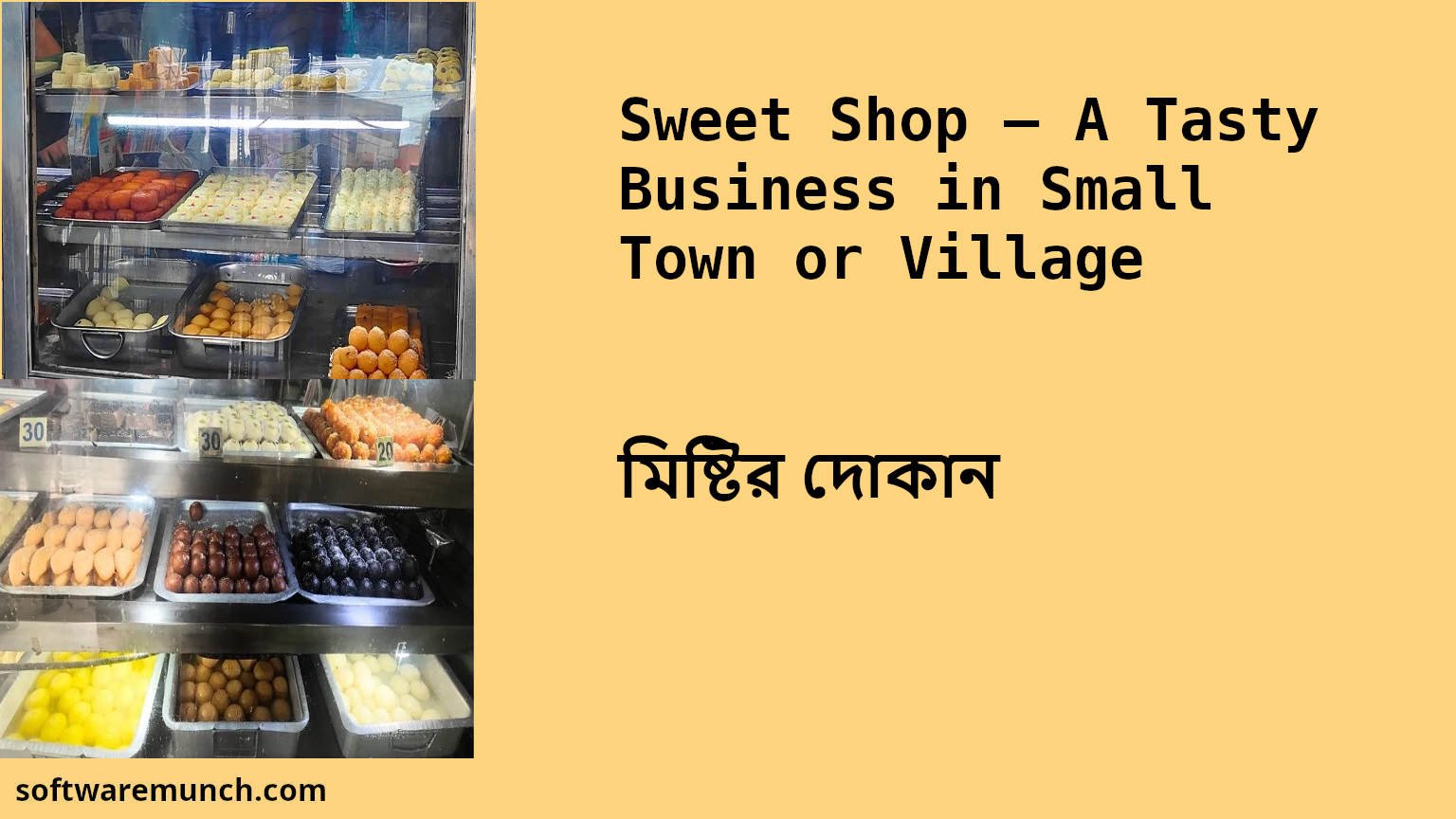In every village and town of Assam, West Bengal and all over India, sweets are a part of daily life. From a small rosogulla after lunch to big trays of laddoo and sandesh in weddings, mithai has a special place in our culture and in our heart. Because of this, a sweet shop ( mistir dokan) is always in demand. People may cut down on clothes or luxuries but when there is a festival or family function, sweets are never ignored and lets not forget craving for sweets.
Opening a sweet shop can be a good business for rural youth if done with planning. Let us see step by step how it can be done.
Learning Mithai making
Before starting, one must learn the art of sweet making. Some people already know the basics like making rosogulla, gulab jamun, laddoo, peda or jilapi at home ( jilapi more difficult to make) . But for a shop, the quality must be better and quantity will be large.
Ways to learn:
- Training in cities – In Assam, places like Guwahati have small institutes and sweet shops where you can join as a helper. Working for 6 to 12 months gives hands on learning. In West Bengal, Kolkata has many big shops where helpers are trained.
- Short courses – Government skill centers like Pradhan Mantri Kaushal Vikas Kendra sometimes offer food preparation and preservation training. Private institutes also offer 1 to 2 month courses on bakery and mithai.
- Apprenticeship – This is the traditional way. Work under an experienced halwai ( mithai maker ) in your area. Even if salary is low at first, you gain valuable knowledge and working skills.
Learning is not only about recipes, but also about handling milk, sugar, ghee and keeping hygiene.
Finding Mithai Makers to Employ
Not everyone may want to make sweets themselves. You can also hire trained people. In rural Assam or Bengal, there are many halwais who move from one place to another for work. You can ask around in local bazaars and mithai shops like Silchar Fatak Bazaar, Hailakandi Bazaar or Burrabazar in Kolkata.
- Some work on monthly salary (Rs10000 to Rs15000 depending on their skill).
- Others work on per kg basis (for example, Rs40 to Rs50 for making 1 kg rasgulla or gulab jamun , these people mostly work from home , you will have to collect your order).
This way, even if you don’t know the making, you can still run the business by employing skilled hands.
Investment Needed
A small sweet shop in a village can start with Rs 1.5 to 3 lakh. Main expenses:
- Shop rent or renovation – Rs5000 to Rs 15000 per month depending on location.
- utensils – big kadhais, gas stoves, trays, ladles etc.
- Refrigerator for storing sweets – Rs20000 to Rs30000.
- Raw materials – milk, sugar, ghee, flour and dry fruits etc.
- Staff salary – for 1 or 2 helpers.
If you cannot arrange full money, start with small items like laddoo, jalebi, or rasgulla. You can sell mithai door to door , in a cycle or a scooter and expand slowly.
Procuring Raw materials
- Milk – Buy from local dairy farmers. Fresh cow milk is best for chhena sweets like rosogulla or sandesh.
- Sugar & Maida – Available from wholesale markets in district towns.
- Dry fruits & Ghee – Buy from bigger cities like Guwahati or Kolkata wholesale shops.
Building good relations with suppliers helps in credit (udhar) system, where you can pay after 15 to 30 days.
Licenses and Permissions
Even small sweet shops need some basic approvals:
- FSSAI License – For selling food items. Easy to apply online or through a local consultant.
- Trade License – From local panchayat or municipality.
- GST – Only if your sales are big ( above Rs40 lakh per year).
Marketing and Growing the Shop
In rural areas, marketing is more about mouth publicity. If your sweets are tasty and fresh, people will automatically spread the word. Some tips:
- keep special sweets like narkoler sondesh , pitha , puli etc, which others don’t sell.
- Take bulk orders for marriages, birthdays, pujas.
- Supply to nearby tea stalls and small eateries.
- During Durga Puja, Bihu, Eid, Diwali – increase production and the stock.
Printing a small board like “Haji Mithai Bhandar – Fresh Rasgulla Daily” outside the shop also works well.
Problems in Running Sweet Shop
Like any business, there are struggles:
- Milk spoilage – If not stored properly, milk and chhena can get spoiled quickly.
- uUnsold stock – Sweets have short shelf life. Rosogolla and sandesh last only 1–2 days. Dry pitha and puli last a bit longer.
- Competition – In towns, many sweet shops may already exist.
- Labour issue – Good halwais sometimes leave suddenly for better pay.
To solve this, start small, learn to manage storage, and always keep good relation with workers.
Last words
A sweet shop is not just a business , it becomes a part of people’s life. Festivals, marriages, and even daily evenings are incomplete without sweets. For rural youth, this is a good self employment idea. With proper training, smart sourcing of raw materials and focus on taste, a mithai shop can give steady income and respect in society.
